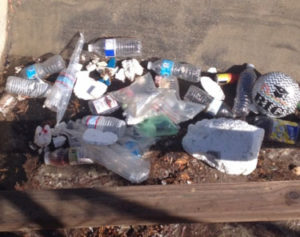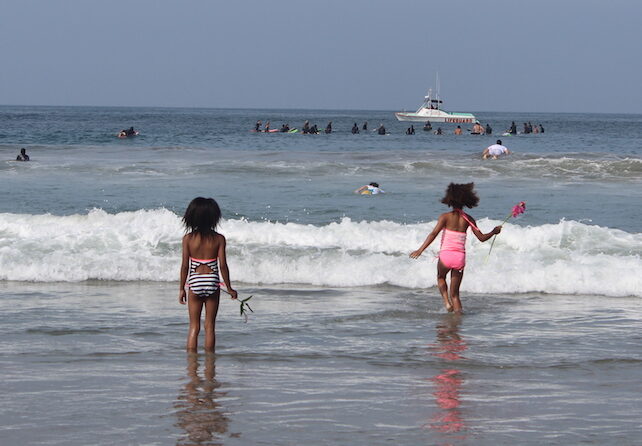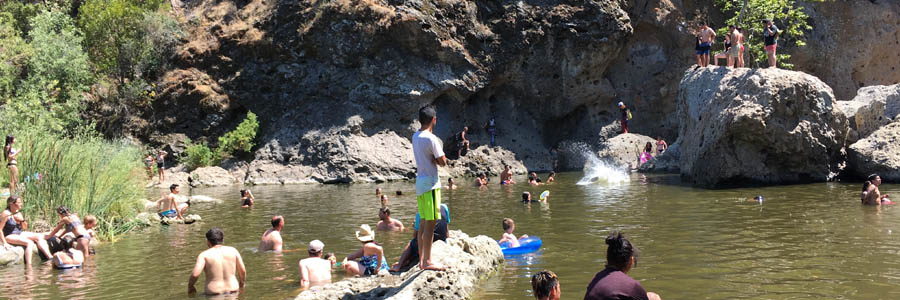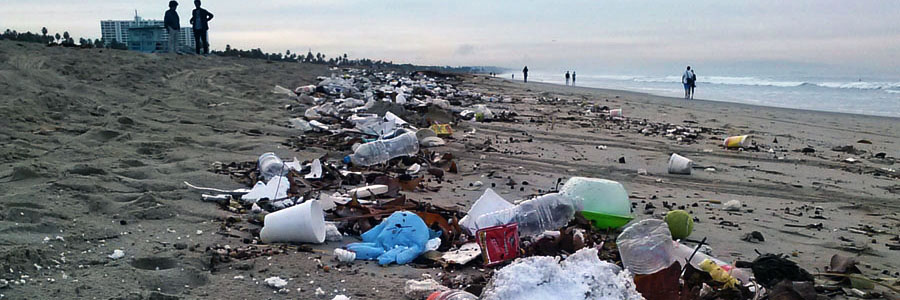Dec. 16, 2016 — Once again, rain is falling throughout the Los Angeles Basin.
Angelenos are expected to experience heavy rainfall during winter months. This weekend’s storm is predicted to generate an inch or two of precipitation throughout the basin, with some areas receiving as much as four inches.
How much water is that?
The County of Los Angeles estimates that during a typical storm event upwards of 10 billion gallons of storm water flushes into the ocean. That’s enough to fill nearly 120 Rose Bowls. Thinking about it another way, 10 billion gallons would provide enough water for a city the size of Santa Monica for more than three months.
Dang, that is a lot of water! Wait… Aren’t we in a drought?
Why are we letting this precious water resource flow into the ocean without trying to capture it? That is odd given we Angelenos import nearly 80% of our potable (safe to drink) water.
What a waste.
Our historic single-use approach to water has long shaped our hydrologic infrastructure, yet the non-use of large quantities of storm water is wasteful. In case you didn’t know, the gutters and catch basins at the end of almost every street in Los Angeles drain to a local river, stream, or creek, and ultimately out to the ocean.
More galling than the opportunity cost lost from not capturing rainwater and instead allowing it to flow out to sea, is the actual cost incurred from these events.

The usual, depressing detritus littered Santa Monica beaches after the recent storm.
Almost every storm event brings physical debris, mostly plastics, to our rivers, creeks, and oceans. In addition, poor water quality after a rainstorm can make rivers and oceans unhealthy for aquatic organisms and recreational users.
In Los Angeles County alone, there are more than 70 major outfalls that spew trash, animal waste, pesticides, automotive fluids, and human-gastrointestinal viruses into our county’s bodies of water. This urban micro-brew of pollution can accumulate in just a couple days on sidewalks and roadways – 12 million people in a highly urbanized landscape – before being washed into the storm drains after a rain event.
The storm drain system is responsible for discharging this pollution into our rivers, creeks, and ocean. This causes potential human health risks, harms marine life, and dampens the tourist economy by littering shorelines.
The more we know, the better the flow.
Rainwater runoff can be captured for future use, whether we are in a drought or not.
Water literacy is a way of understanding the connections between the drought and imported drinking water, local storm water runoff and sewage, land-use and flooding, water quality, and water use.
Rain provides an ideal opportunity to explore water scarcity.
As individuals, we must reflect on our daily water consumption, our own ability to conserve and capture water, and evaluate with a critical eye the systems that handle water. Let the rain hit you, let it revitalize your thoughts on water, and then let’s begin to learn how to use it more efficiently.
Tips for Angelenos after rain storms:
- Stay out of the water. The County of Los Angeles Environmental Health Department and Heal the Bay urge residents and visitors to avoid water contact at Los Angeles County beaches for at least 72 hours following rain event. In some locations and for long-duration rainstorms, staying out of the ocean for more than five days may be more appropriate.
- Know the flow. Test your water knowledge, and share insights about rainwater runoff and where Los Angeles gets its water in your community.
- Be a responder. Heal the Bay’s volunteer Storm Response Team goes on scene at local beaches after big storms to remove the nasty debris flushed from across Los Angeles before this waste ends up in the ocean. Get alerts for more info.







